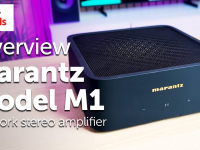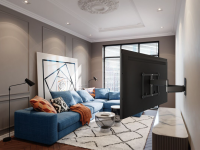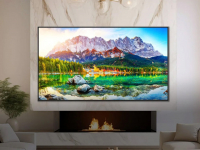
Luxury goods are a funny old thing…
Patek Philippe watches, Christian Louboutin shoes, Savile Row suits; all of these could set you back a few grand a piece – and if you want the full outfit, well, you may just find yourself with more change in your pocket from buying a car (unless we’re talking an Aston Martin, rather than a Ford!).
Luxury purchases are just that – a luxury. There is always a cheaper alternative, something that could do the job for less money, and do it admirably, but it’s a basic human trait to aspire to something greater, and to feel passionate about something that is an important part of our lives. With an increased price tag usually comes higher quality craftsmanship, use of more sophisticated materials, a certain feeling that real care, enthusiasm and attention have been shown to something we hold in high esteem.
Music is one thing that can really bring out passion in us. Whether it’s a favourite Aria, a slice of minimal techno that keeps your head bobbing long past the pain setting in, or the wail of an alto-sax, flying through chords at breakneck speed; something about music stirs up an almost primitive instinct in us.
When a good Hi-Fi system can be picked up these days for less than £500, what is there to really make somebody spend ten times that, in the pursuit of great sound? The Roksan Caspian series is a sublime example of exactly what a luxury Hi-Fi can do for your music collection, and it’s a wonderful display of what can be done when quality, and not cost, is the definitive cause of design.
Roksan
Roksan are a British Hi-Fi manufacturer, and one of the oldest still under original ownership. Established in 1985, they’ve been purveyors of fine audio equipment on this Sceptred Isle ever since. Today sees us look at their ‘Caspian’ range of equipment, two members of which have won highly coveted ‘Product of the Year’ awards in What-Hi-Fi magazine.
Caspian
The Caspian series comprises an integrated amplifier, a CD player, and a power amplifier. No more, no less. No pre-amplifier is made available, with Roksan offering connectivity from power amp to integrated, giving users a great potential upgrade path if more power is required – more on this later.
As with any good luxury product, the eyes are immediately drawn to its well tailored design. The three units all share casework, with an ‘industrial-chic’ top panel in fetching chrome shielding the components within, and contrasting nicely with the brushed black metal front panel. Roksan have proudly etched their name onto the top of this fine livery, and the solid weight of all three shows that this beauty is not merely skin deep.
The integrated amplifier
The integrated comes in at a substantial 10KG, assisted in part by its enormous custom-built toroidal transformer. This is the heart of an amplifier, and this particular beast kicks out 85w per channel into an 8ohm load, jumping up to 125wpc into 4ohms. Also vital in this setup is a separate power stage for the pre-amplifier, ensuring that clean power is sent to both parts of the amplifiers input and output stage without one affecting the other. 5 line inputs are provided for (no phono unfortunately), with a set of tape loops and a switchable XLR (balanced) input for connecting up the CD player (or your player of choice). Needless to say, on paper its distortion figures measure incredibly low, and it’s just as impressive when getting down to some hard work.
The CD player
The CD player is a feat of engineering in itself. The CD mechanism is decoupled from the chassis, isolating as many vibrations from the lens as is possible, and partnered with a master clock that utilises 12 fully regulated digital and analogue circuits, the goal is clear from the start – perfect red book playback. This is a serious piece of kit. A host of digital and analogue outputs are provided however, and their inclusion shows its pedigree.
The power amplifier
The power amplifier offers all of the same grunt that the integrated provides, but will allow the system to jump up to a whole new level of performance, giving more power to each speaker, being a separate amplifier for each side. The benefits here dynamically are shown through greater ‘headroom’ in tracks, with power leading to a higher ease of drive rather than just out-and-out volume. Onto the listening!
The listening experience
On initial setup, we decided to run the system in its basic form – integrated amp and CD, using the XLR connection between the two. We tried a whole host of speakers, but found that the system wasn’t overly fussy with what it was driving, and that really it was personal preference as to which the listener would pick. The Tannoy DC6T SE gave a bit of extra sparkle to the upper midrange and treble, the Dynaudio DM3/7 was a real powerhouse, and the Dali Ikon 6 MK2 (for me, and used for the rest of the review) gave the best of both worlds, with it’s ribbon & soft dome tweeter combination, and it’s substantial drive units lapping up the burly wattage of the Caspians with glee.
More real than real
Starting out with the fantastic ‘Flowmotion EP’ by the Vestbo Trio (downloaded from Bandcamp in FLAC and burnt to CD), this is a great live recording by the Trio, who play electric guitar, upright bass and drums to create a fine jazz sound. The EP was recorded in front of 25 people in Aarhus, Denmark, and really has a live feel to it. Through the Caspian, that really came to the forefront. The close-mic recording style let us hear every fine detail, the picking, the strumming, the soft stroke of the brushes on the skins of the drums. Each member was etched into their own space in the soundstage, clearly defined from their bandmate. The intimacy of the room was there too, and it was easy to feel like the 26th member on what was surely an amazing evening.
What about dynamics?
The equally sublime James Blake provided a low frequency workout for both speakers and amp, with tracks from most recent album ‘Overgrown’. The track ‘Retrograde’ was picked as first single, and rightly so – it’s wailing synth chords form a veritable wall of sound in the chorus, after softly reverbed piano leads us into boom-bap drum patterns for the first verse. The bass here should shake your windows and rattle your walls (thanks Bob), and the Roksan managed that and then some. The trick is articulating the notes, not letting them dissolve into mush, and everything here was beautifully separated, whilst leaving the rhythmic structure of the track intact.
More power please
Adding in the power amp at this point brought its own large gains, with the soundstage becoming more accurate, and dynamic headroom increasing. In short, the sound became more ‘real’, more ‘alive’. The system works fine by itself, but the inclusion of the extra wattage freed up the speakers to just let the sound flow. It wasn’t a case of sheer volume, the dynamics where there during the (admittedly very brief) time that we played the music quietly. It was very much a part of the system, certainly no afterthought. The music kept piling up (Radiohead, Genesis, pop, rock, classical – there were a lot of us in that day!) and the Roksan just kept shining.
Turning it up to 11
It’s certainly a system that requires a decent outlay, but it’s able to reward in spades. It favoured no one genre of music, it smiled when we tried to frighten it into submission with the volume control (we gave up before it did!) and it just kept on going and going. The smiles in the room where there long after we had switched off.
And that’s the thing with luxury goods, they should really make you feel happy, make you understand why it cost what it did, and instil a pride of ownership – it should be something you want to show off to anyone who will look or listen. If that’s what you want for your hi-fi, look no further than the simply amazing Roksan.
Visit our website to shop now.
Author – Chris, Liverpool store





